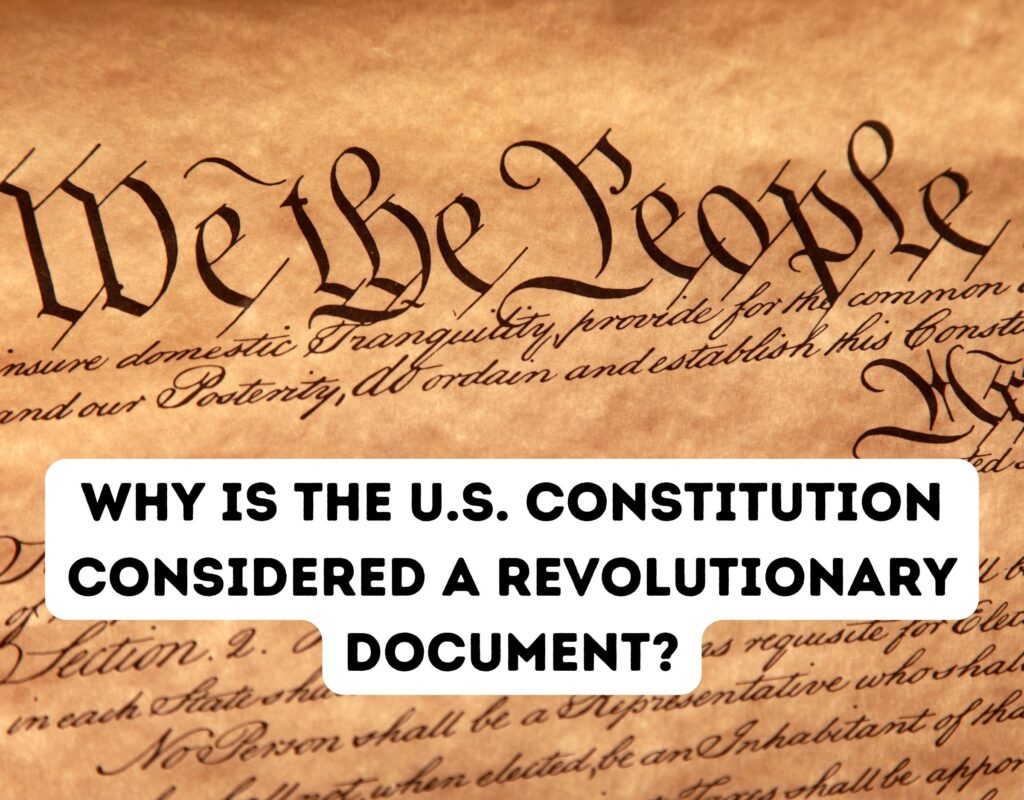The United States Constitution is often hailed as a revolutionary document, and for good reason. Drafted in 1787 and ratified a year later, it laid the foundation for modern democracy and has influenced constitutions around the world. But what exactly makes it so groundbreaking? Let’s delve into the aspects that set the U.S. Constitution apart.

A Written Constitution
One of the most revolutionary aspects of the U.S. Constitution is that it’s written. Unlike Britain, which has an unwritten constitution formed from various statutes and conventions, the U.S. has a single, written document that outlines the structure of its government. This clarity and permanence make it a model for other nations.
Separation of Powers
The Constitution introduced the concept of the separation of powers among the executive, legislative, and judicial branches of government. This was a radical departure from the centralized power structures common in other nations at the time. The idea was to prevent any single entity from gaining too much power, thereby protecting individual freedoms.
Checks and Balances
Closely related to the separation of powers is the system of checks and balances. Each branch of government has some measure of influence over the other branches and may choose to block procedures of the other branches. This system ensures that no single branch becomes too powerful.
Federalism
The U.S. Constitution also introduced the concept of federalism, which allows for a division of powers between the federal government and the states. This was a novel approach that enabled local governments to address local issues effectively while still maintaining a unified national policy.
Bill of Rights
The first ten amendments to the Constitution, known as the Bill of Rights, guarantee essential rights and civil liberties. These amendments were revolutionary in that they provided explicit protections against governmental abuse, something that was not common in other systems of governance of the time.
Frequently Asked Questions
How Did the Constitution Change Over Time?
The U.S. Constitution is often referred to as a “living document” because it includes provisions for amendments. Over the years, 27 amendments have been added, reflecting the evolving needs and values of American society.
What Makes the Constitution Relevant Today?
The principles outlined in the Constitution, such as checks and balances, federalism, and individual liberties, continue to serve as the backbone of American democracy. These principles have proven to be incredibly resilient and adaptable, making the Constitution as relevant today as it was over two centuries ago.
How Has the U.S. Constitution Influenced Other Countries?
The U.S. Constitution has served as a model for numerous other countries drafting their own constitutions. Its principles of representative democracy, separation of powers, and protection of individual rights have had a global impact.
The U.S. Constitution was revolutionary in its approach to governance, individual freedoms, and the balance of power. Its influence extends beyond American borders, serving as a blueprint for democratic governments worldwide. Its enduring principles continue to make it a revolutionary document, even more than two centuries after its creation.
As an Amazon Associate we earn from qualifying purchases through some links in our articles.



